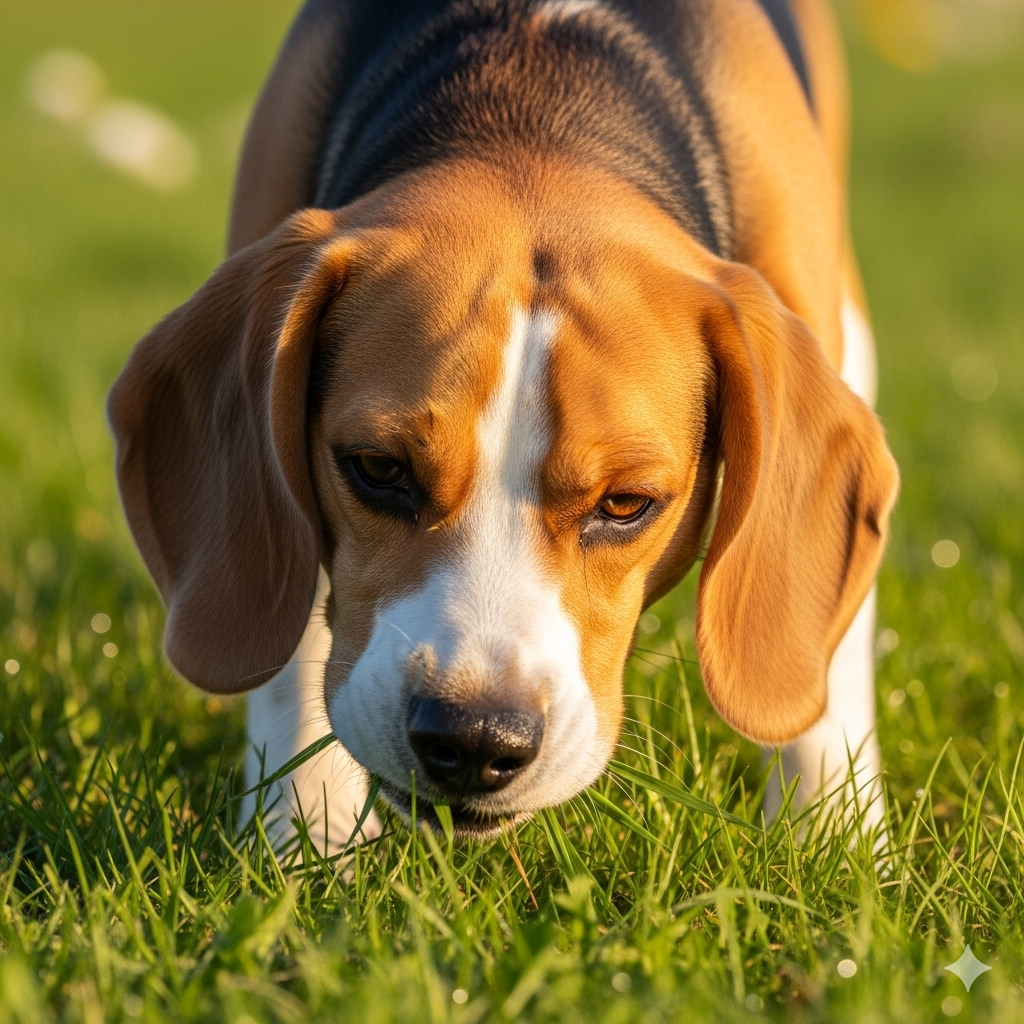Why Do Dogs Eat Grass? Reasons, Safety, and When to Worry
Many dog owners have watched in horror as their canine companion chomps on the lawn and wondered, “Why does my dog eat grass?”
This seemingly odd habit is one of the most-searched dog-care questions online, and for good reason.
While your dog is certainly not a cow, grazing can be a perfectly normal behavior.
In this guide, we'll explore why dogs eat grass, whether it's safe, and when you should intervene.

Is Eating Grass Normal?
Take heart - you're not alone.
A WebMD article notes that pica is the technical term for eating things that aren't food; in dogs it's common and “may be completely natural”.
In one small survey of 49 dog owners, 79% of dogs had regular access to grass and other plants, and 68% of dogs had eaten plants at some time.
In most cases, grazing does not cause problems and is considered normal behavior, especially in puppies and young dogs.
Why Do Dogs Eat Grass? 5 Common Reasons
1. To settle an upset stomach or induce vomiting - Many owners notice their dog eats grass quickly and then vomits. Some experts believe dogs sometimes use grass to trigger nausea and purge something upsetting their stomach. However, WebMD notes that fewer than a quarter of dogs actually vomit after grazing, so eating grass isn't a reliable indicator of illness.
2. To add fiber or nutrients - Grass contains roughage. If a dog's diet lacks fiber or certain micronutrients, it may instinctively graze to supplement its diet. Puppies and young dogs might also experiment with grass because it tastes interesting and provides texture.
3. Boredom or anxiety - Just as people bite their nails when nervous, some dogs nibble grass when bored or anxious. Providing more mental stimulation, interactive toys and exercise can reduce this behavior.
4. Inherited instinct from wild canids - Wild dogs and wolves consume the stomach contents of herbivore prey, which includes partially digested plant matter. Domestic dogs may have retained this ancestral urge to seek out plant material.
5. Because it's enjoyable - Finally, some dogs simply like the taste and texture of fresh grass. As long as the grass isn't treated with chemicals and your dog doesn't become sick, a few blades are usually harmless.
When Should You Worry?
Occasional grazing is typically safe, but there are times when you should consult your veterinarian:
1. Repeated vomiting or diarrhea after eating grass
2. Lethargy, drooling or abdominal pain
3. Obsessive grass-eating (e.g., your dog eats grass every time you go outside)
4. Potential exposure to herbicides, pesticides or toxic plants
If your dog shows any of these signs, schedule a vet visit to rule out gastrointestinal problems, parasites
or dietary deficiencies.
Should I Stop My Dog From Eating Grass?
If your dog occasionally munches on untreated grass and doesn't show signs of illness, you don't necessarily
need to stop them. To reduce the habit:
1. Offer a balanced, high-quality diet rich in fiber and nutrients.
2. Provide mental enrichment through puzzle feeders, training sessions and varied walks.
3. Carry safe chew toys or treats during outdoor time to redirect their attention.
4. Avoid chemically treated lawns and unfamiliar plants that could be toxic.
Want to understand your puppy's personality? 🚀 Try our 3-minute dog personality test !
Related reads: Indoor enrichment games • Why dogs lick paws • Probiotics for gut health
FAQ
Q: Why does my dog eat grass and vomit?
A: Dogs sometimes eat grass to induce vomiting when they're feeling nauseous. However, not all
grass-eating leads to vomiting.
Q: Is it safe for dogs to eat grass?
A: Usually, yes. Grass is generally safe as long as it isn't treated with chemicals.
References: AKC: Why Dogs Eat Grass • VCA: Grass-Eating in Dogs • ASPCA: Poisonous Plants List